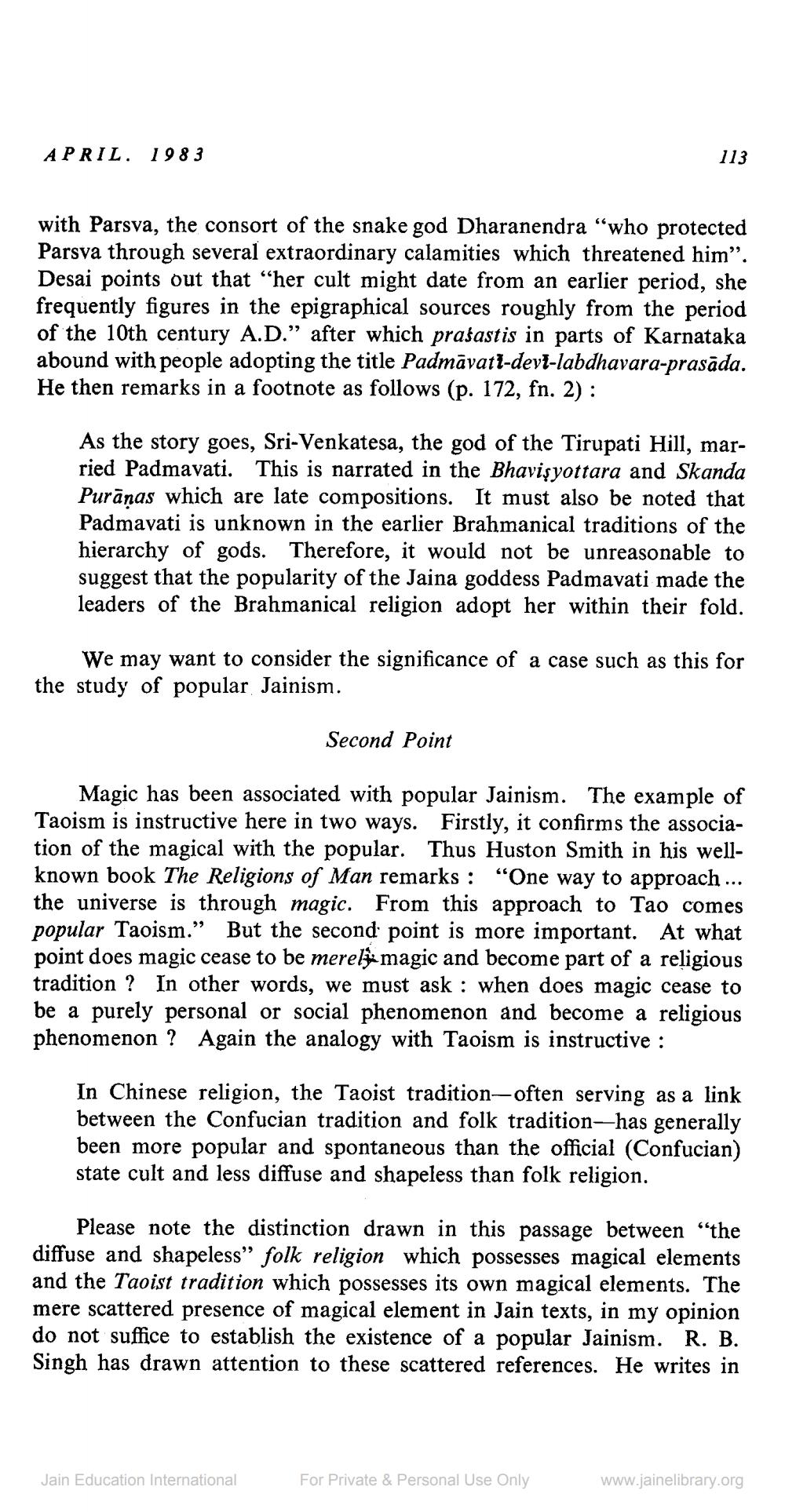Book Title: Jain Journal 1983 04 Author(s): Jain Bhawan Publication Publisher: Jain Bhawan Publication View full book textPage 9
________________ APRIL. 1983 with Parsva, the consort of the snake god Dharanendra "who protected Parsva through several extraordinary calamities which threatened him”. Desai points out that "her cult might date from an earlier period, she frequently figures in the epigraphical sources roughly from the period of the 10th century A.D." after which prasastis in parts of Karnataka abound with people adopting the title Padmavati-devi-labdhavara-prasāda. He then remarks in a footnote as follows (p. 172, fn. 2): As the story goes, Sri-Venkatesa, the god of the Tirupati Hill, married Padmavati. This is narrated in the Bhavişyottara and Skanda Purāṇas which are late compositions. It must also be noted that Padmavati is unknown in the earlier Brahmanical traditions of the hierarchy of gods. Therefore, it would not be unreasonable to suggest that the popularity of the Jaina goddess Padmavati made the leaders of the Brahmanical religion adopt her within their fold. 113 We may want to consider the significance of a case such as this for the study of popular Jainism. Second Point Magic has been associated with popular Jainism. The example of Taoism is instructive here in two ways. Firstly, it confirms the association of the magical with the popular. Thus Huston Smith in his wellknown book The Religions of Man remarks: "One way to approach... the universe is through magic. From this approach to Tao comes popular Taoism." But the second point is more important. At what point does magic cease to be merely magic and become part of a religious tradition? In other words, we must ask when does magic cease to be a purely personal or social phenomenon and become a religious phenomenon? Again the analogy with Taoism is instructive : In Chinese religion, the Taoist tradition-often serving as a link between the Confucian tradition and folk tradition-has generally been more popular and spontaneous than the official (Confucian) state cult and less diffuse and shapeless than folk religion. Jain Education International Please note the distinction drawn in this passage between "the diffuse and shapeless" folk religion which possesses magical elements and the Taoist tradition which possesses its own magical elements. The mere scattered presence of magical element in Jain texts, in my opinion do not suffice to establish the existence of a popular Jainism. R. B. Singh has drawn attention to these scattered references. He writes in For Private & Personal Use Only www.jainelibrary.orgPage Navigation
1 ... 7 8 9 10 11 12 13 14 15 16 17 18 19 20 21 22 23 24 25 26 27 28 29 30 31 32 33 34 35 36 37 38 39 40 41 42 43
